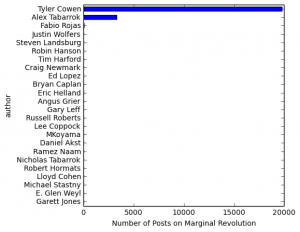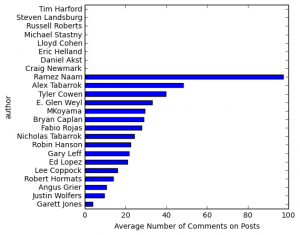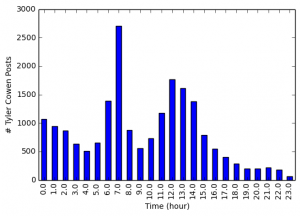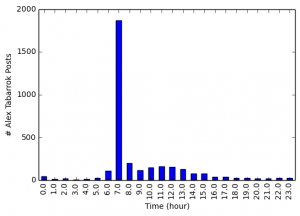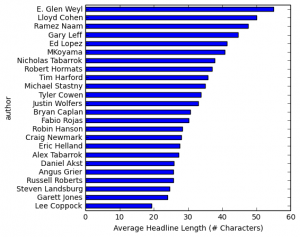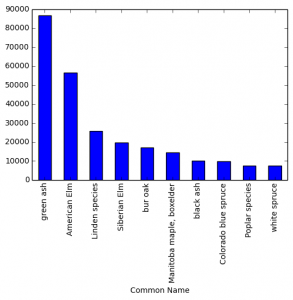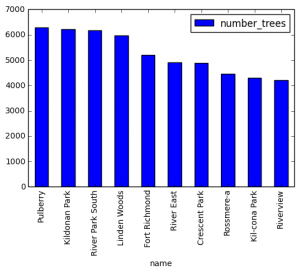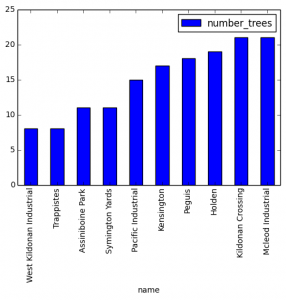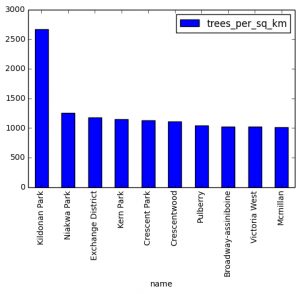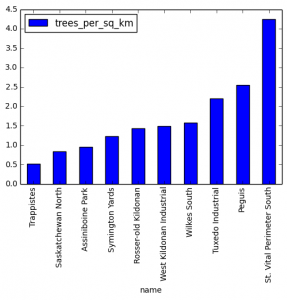Public speaking used to be a big sore spot for me. I was able to do it, but I truly hated it and it caused me a great deal of grief. When I knew I had to speak it would basically ruin the chunk of time from when I knew I would have to speak to when I did it. And don’t get me started on impromptu speaking – whenever something like that would pop up, I would feel pure terror.
Things got a bit better once I entered the working world and had to speak somewhat regularly, giving presentations to clients and staff and participating in meetings. But still, I hated it. I thought I was no good and had a lot of anxiety associated with it.
A little over a year ago, I finally had enough and decided I needed to do something about it. I joined the Venio Dictum toastmasters group in Winnipeg. After only a few months, I started to become much more relaxed and at ease when speaking. Today, one year later, I actually look forward to giving speeches and facing the challenge of impromptu speaking. A year ago, if you told me I would feel this way now, I wouldn’t have believed you.
Imagine being the type of person that volunteers to address a crowd or give a toast off the cuff. Imagine looking forward to speaking at a wedding, meeting, or other event. Imagine being totally comfortable in one of those “networking event” situations where you enter a room crowded full of people you don’t know. A year ago, I used to think people that enjoyed this stuff were from another planet. Now, I understand this attitude and I feel like I’m getting there myself.
Why should a Data Scientist care about speaking skills?
- Communication is a critical part of the job
Yes, a huge part of being a data scientist is having skills in mathematics, statistics, machine learning, programming, and having domain expertise.
However, technical skills are not anywhere close to the entire picture. You might be fantastic at data analysis, but if you aren’t able to communicate your results to others, your work is basically useless. You’ll wind up producing great analysis that ultimately never get implemented or even considered at all because you failed to properly explain its value to anyone.
Speaking is a huge part of communication, so you need to be good at it (the other big area of communication is writing, but that’s a topic for another day).
- Professional advancement
To get to the next level in your career (and to get a data scientist job in the first place), it really helps to be a confident and persuasive speaker.
Job interviews are a great example. When you apply for a job, there will always be an interview component where you’ll have to speak and answer questions you have not prepared for in advance. Even if your resume and portfolio look great, it’s going to be hard for an employer to hire you if you bomb the interview.
This also applies to promotions from within your current company. Advanced positions typically require rely more on communication and management skills like speaking and less on specific technical skills.
- Network / connection building
Improved speaking doesn’t just make your presentations better: it makes your day-to-day communications with colleagues and acquaintances better too. You’ll become a better conversationalist and a better listener.
As a data scientist, you’ll likely be working with multiple teams within your organization and outside your organization. You will need to gain their trust and support, and better speaking helps you do that.
- It makes you a better thinker / learner
The motto of my toastmasters club is “better listening, thinking, and speaking” because a huge part of speaking is learning how to organize your thoughts in a clear package so they are ready for delivery to your audience. As George Horace Latimer said in his book Letters from a Self Made Man to his Merchant Son:
“There’s a vast difference between having a carload of miscellaneous facts sloshing around loose in your head and getting all mixed up in transit, and carrying the same assortment properly boxed and crated for convenient handling and immediate delivery.”
Having a lot of disparate facts in your head is not very useful if they are not organized in a way that lets you easily access them when the time is right. Preparing a speech forces you to organize your thoughts, create a coherent narrative, and understand the principles underlying the ideas that you’re trying to communicate.
This habit of understanding the underlying rules and principles behind what you learn is referred to by psychologists as “structure building” or “rule learning”. As described in the book Make it Stick, people who do this as a habit are more successful learners than people that take everything they learn at face value, never extracting principles that can be applied to new situations. Public speaking cultivates this skill.
This is particularly important for data scientists, given the incredibly diverse range of subjects we are required to develop expertise in and the constantly evolving nature of our field. To manage this firehose of information, we must have efficient learning habits.
One great thing about Toastmasters is you can give a speech on any topic you want. So go ahead, give a speech on deep reinforcement learning to help solidify your understanding of the topic (but explain in a way that your grandmother could understand).
- Speaking is a fundamental skill that will impact your life in many other ways
Speaking is a great example of a highly transferable skill that pays off no matter what you decide to do. Since it deeply pervades everything we do in our personal and professional lives, the ROI for improving is tremendous. (In my opinion, some other skills that fall into this category include writing, sales, and negotiation.)
Consider all the non-professional situations in your life where you speak to others (e.g. your spouse, kids, parents, family, acquaintances, community groups). Toastmasters will make all of these interactions more fruitful.
Suppose you decide data science isn’t right for you. Well, you can be close to 100% sure the speaking skills you develop through Toastmasters will still be valuable whatever you decide to do instead.
In terms of the 80-20 rule, working on your public speaking is definitely part of the 20% that yields 80% of the results. It’s worth your time.
How Does Toastmasters Work?
Although each club may do things a little differently, all use the same fundamental building blocks to make you a better speaker:
- Roles: At each meeting, there are a list of possible “roles” that you can play. Each of these roles trains you in a different public speaking skill. For example, the “grammarian” observes everyones language and eloquence, “gruntmaster” monitors all the “ums”, “uhs”, “likes”, “you knows” etc. There is a “Table Topics Master” role where you propose random questions to members they have not prepared for in advance and they have to do an impromptu speech about it for two minutes (an incredibly valuable training exercise, especially if you fear impromptu speaking). Here are the complete list of roles and descriptions of the roles in my club.
- Prepared speeches: Of course, there are also tons of opportunities to provide prepared speeches. Toastmasters provides you with manuals listing various speeches to prepare that give you practice in different aspects of public speaking. You do these speeches at your own pace.
- Evaluations: Possibly the most valuable feature of Toastmasters is that everyone’s performance is evaluated by others. In a Toastmasters group, you’ll often have a subset of members that are very skilled and experienced speakers (my club has several members that have been with the club 25+ years), and the feedback you get can be invaluable. It’s crucial for improvement, and it’s something you don’t usually get when speaking in your day-to-day life.
Go out and find a local Toastmasters group and at check it out as a guest to see how it works up close. They will be more than happy to have you. You owe it to yourself to at least give it a try. If your experience is anything like mine, you’ll be kicking yourself for not starting earlier (and by “earlier” I mean high school or even sooner – it’s definitely something I’m going to encourage my daughter to do).

